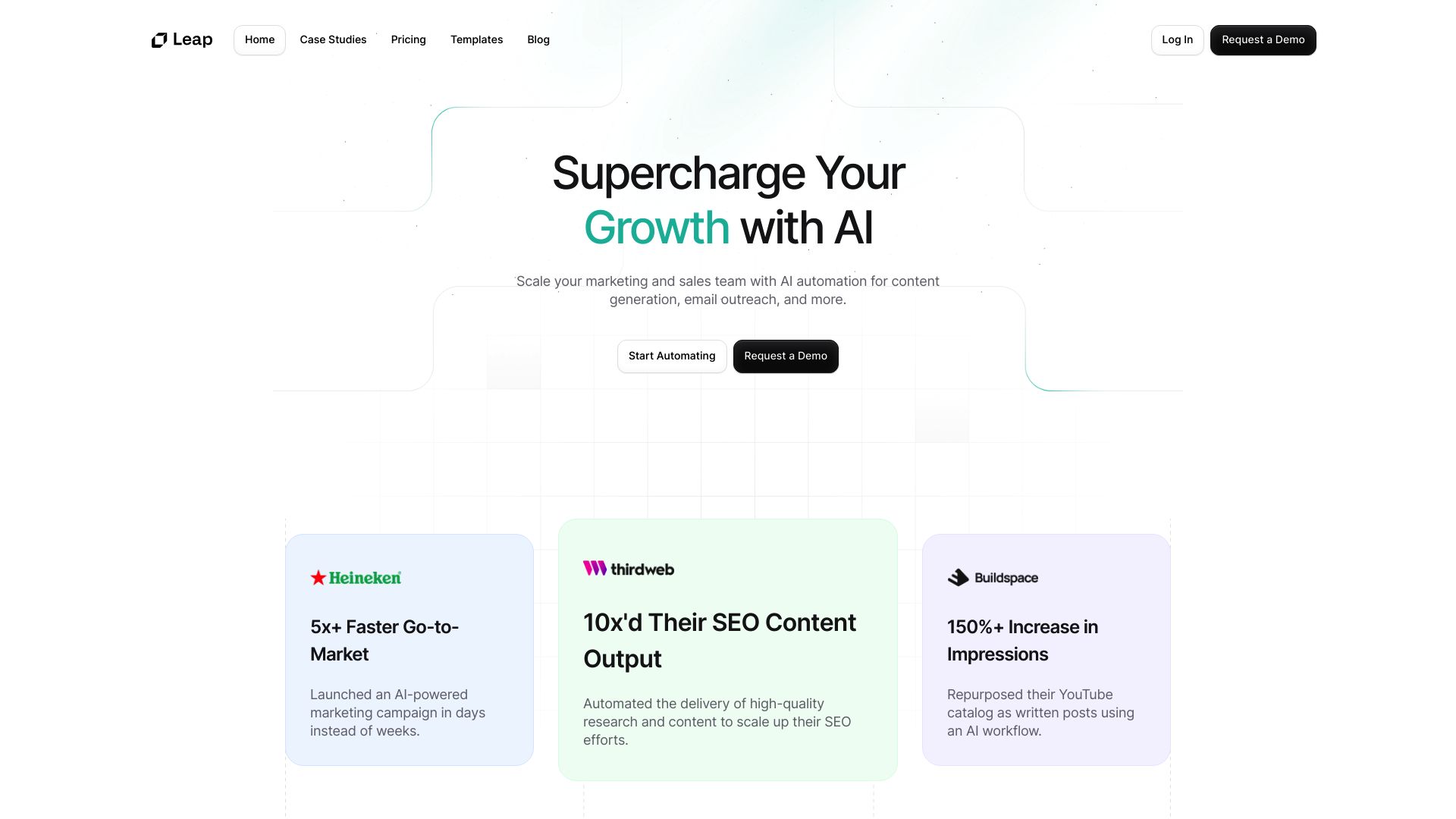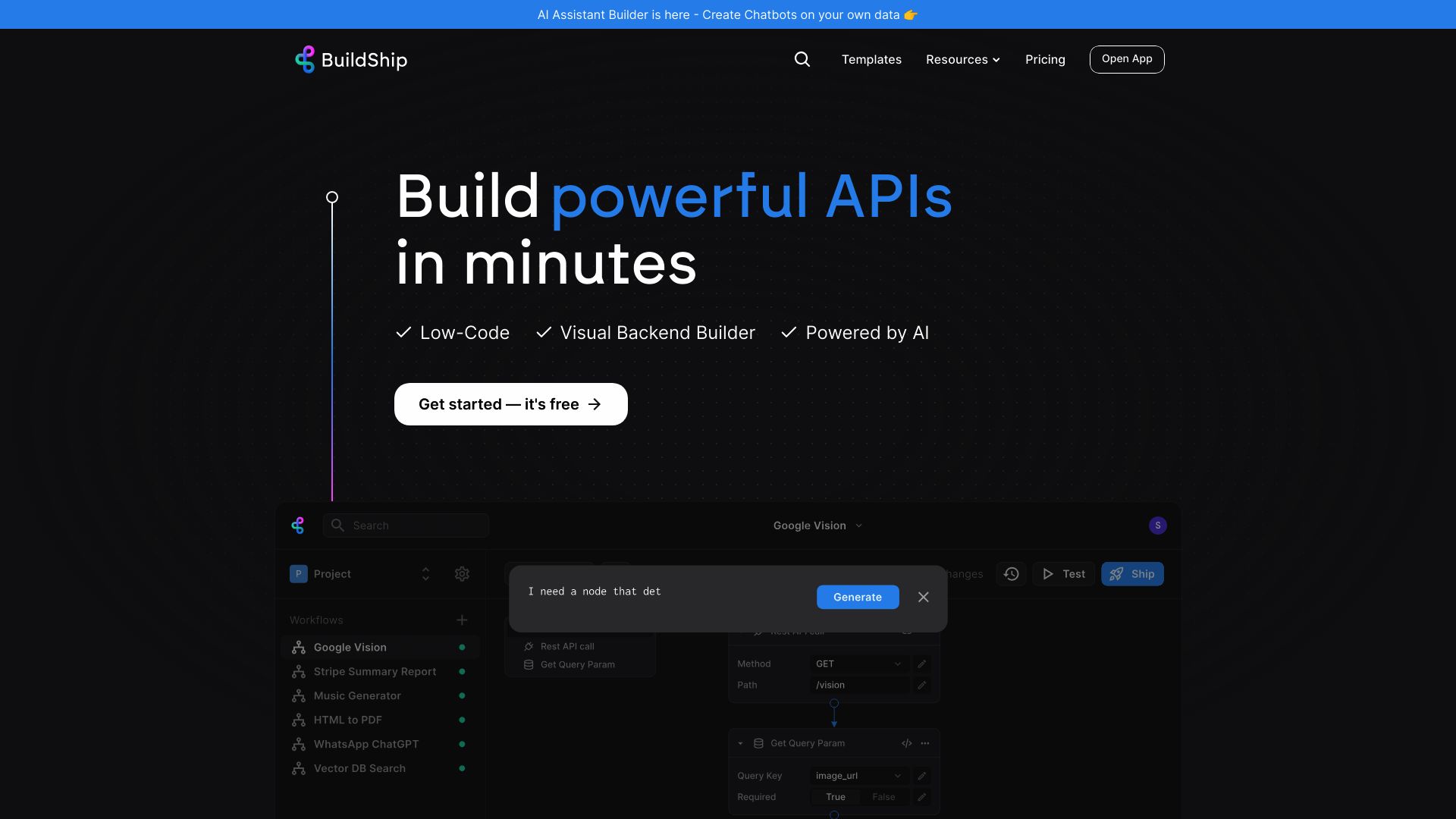Leap AI vs. BuildShip: Comparing AI Workflow Platforms
AI-powered workflow creation revolutionizes business processes, and three platforms stand at the forefront: Leap AI vs. BuildShip, and SmythOS. This comparison delves into their unique approaches, strengths, and limitations. Leap AI shines with its intuitive no-code interface and AI model integration, while BuildShip excels in backend development and API creation. SmythOS, however, emerges as the comprehensive solution, combining advanced AI capabilities with robust security features.
We explore how each platform tackles workflow automation, AI integration, and scalability, providing insights to help businesses make informed decisions in adopting AI-driven solutions. Whether you’re a developer seeking powerful APIs, a business leader focused on enterprise-scale deployment, or a non-technical user looking for accessible AI tools, this analysis offers valuable perspectives on choosing the right platform for your AI journey.
Leap AI Overview
Leap AI transforms AI workflow creation with its intuitive no-code platform. Users can build sophisticated AI applications in minutes using a drag-and-drop interface, eliminating coding barriers. The platform integrates seamlessly with popular AI models like OpenAI GPT and Stable Diffusion XL, offering versatile capabilities from text generation to image creation.
Users can build sophisticated AI applications in minutes using a drag-and-drop interface, eliminating coding barriers.


Leap AI provides comprehensive SDK support, including RESTful API, TypeScript, and Python, facilitating easy integration into various applications. Its extensive template library accelerates development, offering ready-made solutions for tasks like blog post generation and lead summarization. The platform’s integration capabilities extend to popular tools such as Slack, HubSpot, and Zapier, enhancing workflow efficiency.
While Leap AI excels in user-friendliness and integration, it lacks some advanced features. The platform doesn’t offer hosted agents or autonomous agent capabilities, which might limit its use in complex, self-running AI systems. Additionally, there’s no specific mention of explainability features or debug modes, potentially challenging users who need detailed insights into AI decision-making processes.
Leap AI’s strengths lie in its accessibility and rapid deployment capabilities.
Leap AI’s strengths lie in its accessibility and rapid deployment capabilities. The platform enables users to fine-tune and train custom models using their datasets, enhancing AI output specificity and accuracy. This feature, combined with its intuitive interface, positions Leap AI as a powerful tool for businesses and individuals looking to leverage AI without extensive technical expertise.
BuildShip Overview
BuildShip transforms backend development with its visual no-code platform for creating, testing, and deploying workflows and APIs. The platform’s drag-and-drop interface empowers users to construct complex backend processes without extensive coding knowledge.
At its core, BuildShip offers a robust set of tools for workflow automation. Users can integrate various data sources, APIs, and AI models to create sophisticated backend logic. The platform’s AI-powered node creation feature stands out, allowing developers to generate custom nodes using natural language prompts. This capability significantly accelerates the development process and opens up new possibilities for workflow design.
BuildShip transforms backend development with its visual no-code platform for creating, testing, and deploying workflows and APIs.


BuildShip’s testing capabilities enable iterative development, allowing users to refine individual nodes and entire workflows. Once perfected, these workflows can be deployed as production-grade APIs, seamlessly integrating into existing applications. The platform also supports scheduled workflows, enhancing automation capabilities for businesses.
Security features like OAuth integration and secure storage for API keys ensure that sensitive information remains protected throughout the development and deployment process. BuildShip’s focus on user-friendly design, coupled with its powerful backend capabilities, positions it as a valuable tool for developers and businesses looking to streamline their workflow creation and API deployment processes.
BuildShip’s focus on user-friendly design… positions it as a valuable tool for developers and businesses looking to streamline their workflow creation and API deployment processes.
While BuildShip excels in many areas, it’s worth noting that it may not offer the same level of advanced AI agent capabilities or autonomous operation features found in some specialized AI platforms. However, its strength lies in simplifying complex backend processes and providing a versatile environment for workflow automation and API creation.
Feature Comparison
Leap AI and BuildShip offer distinct approaches to AI-powered workflow creation, each with its own strengths and limitations. Leap AI excels in rapid AI application development through its intuitive drag-and-drop interface and extensive template library. It integrates seamlessly with popular AI models and offers comprehensive SDK support for easy integration into various applications. BuildShip, on the other hand, focuses on backend development, providing a visual platform for creating, testing, and deploying workflows and APIs without extensive coding.
A significant feature gap exists in their AI capabilities. While Leap AI provides integration with advanced AI models like OpenAI GPT and Stable Diffusion XL, BuildShip lacks specific AI agent features and autonomous operation capabilities. This limits BuildShip’s ability to create sophisticated AI-driven workflows compared to Leap AI’s more AI-centric approach.
In terms of core components, Leap AI offers a more comprehensive set of AI-related features, including AI model training and fine-tuning options. BuildShip compensates with its strength in backend process automation and API creation. However, neither platform fully matches SmythOS in terms of advanced features like hosted agents, autonomous agent capabilities, or multi-agent collaboration.
Regarding security, both platforms offer basic features like data encryption and OAuth support. However, they fall short of SmythOS’s more advanced security features, such as constrained alignment and comprehensive audit logs. This gap in security and transparency features may be a concern for enterprises dealing with sensitive data or requiring detailed insights into AI decision-making processes.
SmythOS stands out with its superior combination of AI capabilities, backend development tools, and advanced security features. It offers hosted agents, autonomous agent capabilities, and multi-agent collaboration, filling the gaps left by both Leap AI and BuildShip. SmythOS provides a more complete solution for businesses seeking to leverage AI in their workflows while maintaining high standards of security and scalability.
Feature Comparison Table
| Leap AI | BuildShip | SmythOS | |
|---|---|---|---|
| CORE FEATURES | |||
| Hosted Agents (Dev, Production) | ❌ | ✅ | ✅ |
| Memory & Context | ✅ | ❌ | ✅ |
| Autonomous Agents | ❌ | ❌ | ✅ |
| Explainability & Transparency | ❌ | ❌ | ✅ |
| Debug Tools | ❌ | ✅ | ✅ |
| Multimodal | ✅ | ❌ | ✅ |
| Problem-Solving Capabilities | ✅ | ❌ | ✅ |
| Multi-Agent Collaboration | ❌ | ❌ | ✅ |
| Human-AI Interaction | ✅ | ❌ | ✅ |
| Audit Logs for Analytics | ✅ | ❌ | ✅ |
| Work as Team | ✅ | ❌ | ✅ |
| SECURITY | |||
| Constrained Alignment | ❌ | ❌ | ✅ |
| COMPONENTS | |||
| Foundation AIs | ✅ | ❌ | ✅ |
| Huggingface AIs | ✅ | ❌ | ✅ |
| Zapier APIs | ✅ | ❌ | ✅ |
| Classifiers | ✅ | ❌ | ✅ |
| Data Lakes | ❌ | ❌ | ✅ |
| DEPLOYMENT OPTIONS (EMBODIMENTS) | |||
| Staging Domains | ✅ | ❌ | ✅ |
| Production Domains | ✅ | ❌ | ✅ |
| Deploy as Site Chat | ✅ | ❌ | ✅ |
| Deploy as GPT | ✅ | ❌ | ✅ |
| DATA LAKE SUPPORT | |||
| Hosted Vector Database | ❌ | ❌ | ✅ |
| Sitemap Crawler | ✅ | ❌ | ✅ |
| YouTube Transcript Crawler | ✅ | ❌ | ✅ |
| URL Crawler | ✅ | ❌ | ✅ |
| PDF Support | ✅ | ❌ | ✅ |
| Word File Support | ✅ | ❌ | ✅ |
| TXT File Support | ✅ | ❌ | ✅ |
Best Alternative to Leap AI and BuildShip
SmythOS emerges as the superior alternative to Leap AI and BuildShip for AI agent development and deployment. We offer a comprehensive platform that combines the strengths of both competitors while addressing their limitations. Our drag-and-drop interface rivals Leap AI’s ease of use, allowing rapid creation of sophisticated AI workflows without coding expertise.
Unlike BuildShip’s backend focus, we enable end-to-end AI solution development, from agent creation to production deployment. SmythOS excels in autonomous agent capabilities, multi-agent collaboration, and advanced security features—areas where both Leap AI and BuildShip fall short. Our platform supports a wide array of AI models, APIs, and data sources, surpassing the integration options of our competitors. We provide unmatched flexibility in deployment, allowing agents to be deployed as APIs, chatbots, scheduled tasks, or GPT models.
SmythOS’s scalability and performance monitoring tools ensure enterprise-grade reliability, addressing the limitations of both Leap AI and BuildShip in handling large-scale, complex AI implementations. By choosing SmythOS, users gain access to a feature-rich, secure, and highly adaptable AI development environment that outperforms both Leap AI and BuildShip in key areas critical for successful AI agent creation and management.
SmythOS emerges as the superior alternative to Leap AI and BuildShip for AI agent development and deployment… combining the strengths of both competitors while addressing their limitations.
Conclusion
Leap AI, BuildShip, and SmythOS each offer unique approaches to AI-powered workflow creation and automation. Leap AI excels in rapid AI application development with its intuitive interface and extensive template library. BuildShip focuses on backend development, providing a visual platform for creating and deploying workflows and APIs. However, SmythOS emerges as the superior choice, combining the strengths of both while offering advanced features neither competitor provides.
SmythOS stands out with its comprehensive AI capabilities, including hosted agents, autonomous operations, and multi-agent collaboration. These features enable businesses to create sophisticated AI systems that can handle complex tasks with minimal human intervention. Additionally, SmythOS’s advanced security measures, including constrained alignment and comprehensive audit logs, address the growing concerns around AI transparency and data protection.
While Leap AI and BuildShip may suit specific use cases, SmythOS offers a more complete solution for businesses seeking to leverage AI across their operations. Its versatility in deployment options, from APIs to chatbots, allows for seamless integration into existing systems. The platform’s emphasis on no-code development, coupled with its powerful backend capabilities, makes it accessible to both technical and non-technical users, democratizing AI development across organizations.
For those looking to harness the full potential of AI in their workflows, SmythOS provides the most comprehensive and forward-thinking solution. We invite you to explore our diverse range of AI-powered agent templates and experience unlimited AI automation risk-free. With SmythOS, you’re not just adopting a tool; you’re embracing the future of AI-driven business transformation.
Last updated:
Disclaimer: The information presented in this article is for general informational purposes only and is provided as is. While we strive to keep the content up-to-date and accurate, we make no representations or warranties of any kind, express or implied, about the completeness, accuracy, reliability, suitability, or availability of the information contained in this article.
Any reliance you place on such information is strictly at your own risk. We reserve the right to make additions, deletions, or modifications to the contents of this article at any time without prior notice.
In no event will we be liable for any loss or damage including without limitation, indirect or consequential loss or damage, or any loss or damage whatsoever arising from loss of data, profits, or any other loss not specified herein arising out of, or in connection with, the use of this article.
Despite our best efforts, this article may contain oversights, errors, or omissions. If you notice any inaccuracies or have concerns about the content, please report them through our content feedback form. Your input helps us maintain the quality and reliability of our information.
